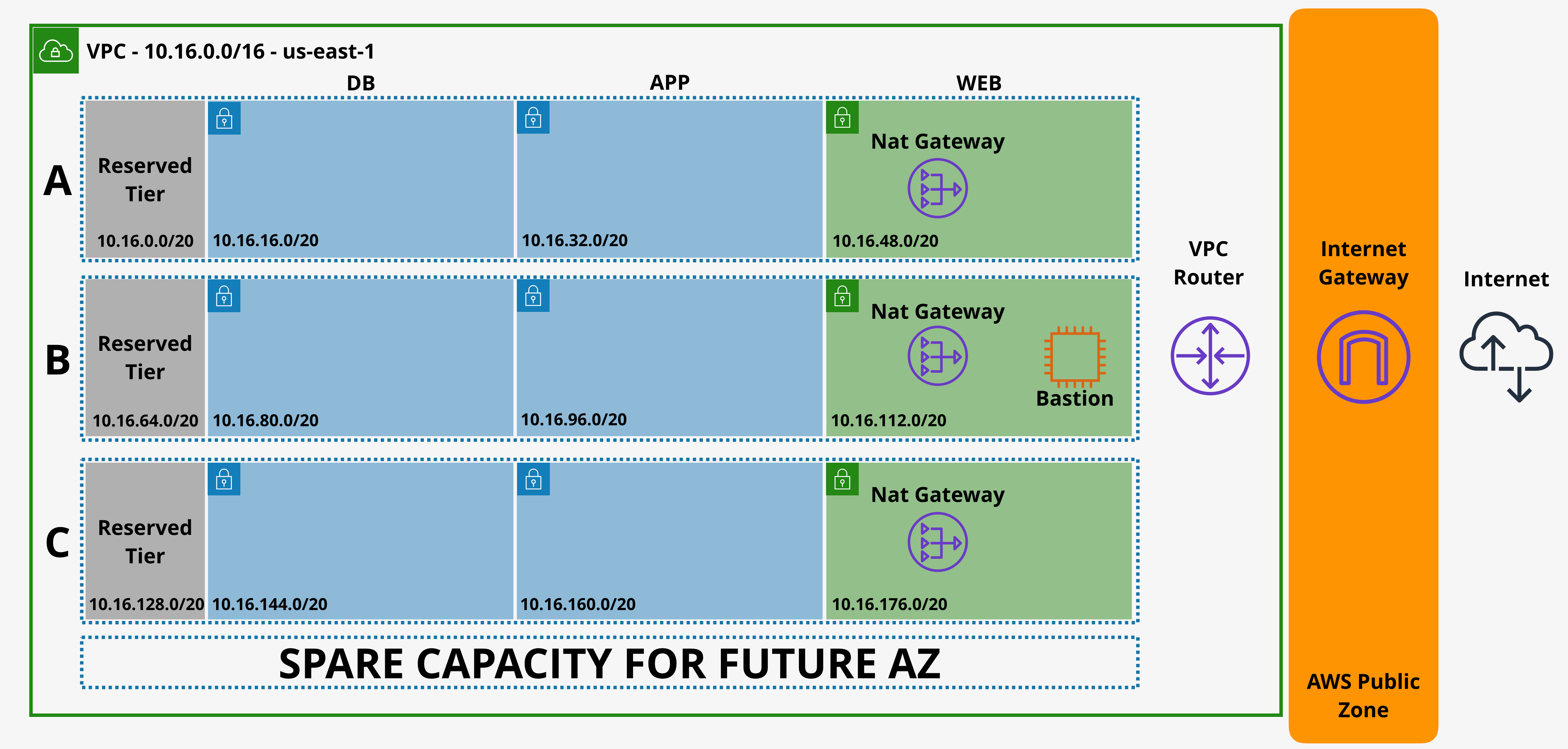| tags: [ terraform infrastructure ]
Better Utilization of Terraform Resource Keys
When managing multiple dissimilar resources in Terraform, best practices
dictate that you use the for_each
meta-argument.
Furthermore, when needing to convert a list to a set or map for chaining, the
advice given is usually of the form:
for_each = {
for k, v in aws_subnet.all : k => v
}
This will work but unfortunately it becomes unwieldy the more you need to rely on these generated resources.
A motivating example
In one of Adrian Cantrill’s excellent courses on AWS, we are tasked with setting up a multi-tier subnet design:
 (Courtesy of https://learn.cantrill.io)
(Courtesy of https://learn.cantrill.io)
We can set this up in Terraform like so:
locals {
subnet_tiers = ["reserved", "db", "app", "web"]
subnet_azs = ["A", "B", "C"]
subnet_tiers_azs = [
for i, s in setproduct(local.subnet_tiers, local.subnet_azs) : {
name = s[0]
az = s[1]
cidr = cidrsubnet(var.vpc_cidr, 4, i)
}
]
}
# It's not possible to directly use `subnet_tier_azs` here since it only
# accepts maps or a set of strings
resource "aws_subnet" "all" {
for_each = {
for k, v in local.subnet_tiers_azs : k => v
}
tags = {
Name = "sn-${each.value.name}-${each.value.az}"
}
# ... etc.
}
This is serviceable1 and the Name tag allows us to pick a single subnet.
Let’s create a bastion in the web-A subnet:
resource "aws_instance" "bastion" {
# ...
# Get the subnet ID from the tag `sn-web-A`
subnet_id = one([
for v in aws_subnet.all : v.id if length(regexall(".*-web-A", v["tags"]["Name"])) > 0
])
}
Having to rely on one, length and regex functions to pick out the web-A
subnet becomes error-prone and unergonomic.
A better way
There is a better way to name our resources upon creation. Instead of
k => v in the for_each block, we can explicitly name the key of each
subnets:
resource "aws_subnet" "all" {
for_each = {
for k, v in local.subnet_tiers_azs : "${v.name}-${v.az}" => v
}
# ...
}
Now, we can refer to any subnet we’d like by using the key we’d named. Let’s
replace the subnet_id value above during creation of our bastion host:
subnet_id = aws_subnet.all["web-A"].id
The other upside of this method is that resource chaining forward will also
use these keys as default. This helped give me a better understanding of how
Terraform creates the final structure for resources made from for_each
blocks.
-
In case you’re wondering what the structure of this ends up looking like, it becomes a map keyed with the index. ↩︎